#alpacafiber
Text
🦙🌟 Happy Alpaca Day, USA! 🌟🦙
September 26 is the day we celebrate these fluffy, adorable, and oh-so-charming creatures - Alpacas! 🥳🎉
🧡 Why do we love alpacas?
🌿 They're the eco-friendly lawnmowers of the animal kingdom, keeping pastures trim and healthy.
💕 Alpacas have the softest and most luxurious fleece, perfect for crafting cozy sweaters and blankets.
🐾 They're gentle, social, and just a little bit goofy - who can resist those big, expressive eyes?
So, whether you're an alpaca enthusiast, a fiber artist, or simply someone who adores cute animals, take a moment today to appreciate these incredible creatures. Share your alpaca photos, stories, or art, and let's spread the alpaca love! 💖📸✨
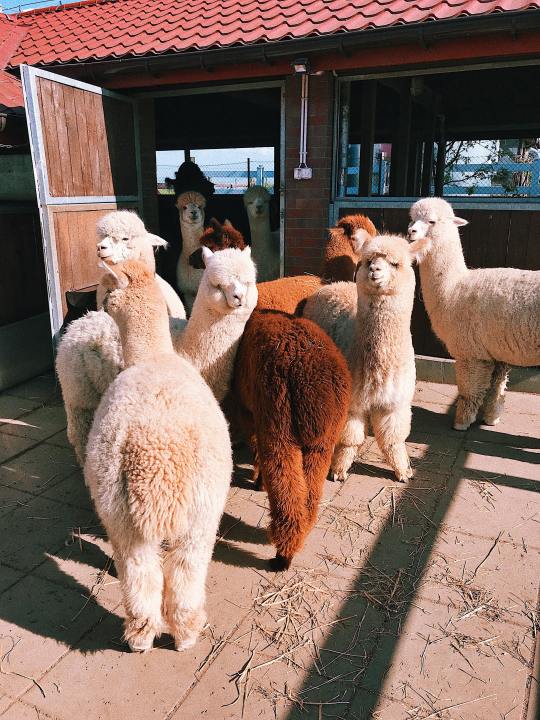
#AlpacaDay#AlpacaLove#FluffyFriends#AdorableAlpacas#AlpacaAdventures#LlamaDrama#FiberArt#AlpacaAppreciation#CuteCrew#NatureLovers#USA#AnimalObsession#CelebratingAlpacas 🦙🇺🇸💕#followme#blossomlifestylehub#AlpacaFiber#AlpacaFarm#AlpacaLife#AlpacaArt#AlpacaCuteness#AlpacaPhotography#AnimalMagic#FluffyFriday#FarmLife#AnimalFriends#NaturePhotography#HappyAlpacaDay#CuddlyCompanions#AnimalPhotography#AlpacaAdmiration
1 note
·
View note
Link
🦙 Alpaca shearing is a crucial task for alpaca farmers to maintain the health and well-being of their animals. It involves removing the fleece from the alpaca's body, which can weigh up to 10 pounds. Shearing helps prevent heat stress and keeps the alpacas cool during the summer months. 🦙 Shearing an alpaca requires skill and patience. It's important to use the right tools and techniques to ensure a smooth and stress-free experience for both the alpaca and the farmer. Proper shearing also ensures a high-quality fleece that can be used for a variety of products, from clothing to blankets. 🦙 In this article, we'll cover tips and techniques for alpaca shearing, including the best time to shear, how to prepare your alpaca for shearing, and the tools you'll need. We'll also discuss common mistakes to avoid and provide step-by-step instructions for a successful shearing experience.1. Importance of Alpaca Shearing for Health and Fiber QualityAlpaca shearing is crucial for their health and fiber quality. Regular shearing prevents heat stress, skin infections, and flystrike. Heat stress can cause dehydration, weight loss, and even death. Skin infections can lead to painful lesions and permanent damage. Flystrike can attract maggots, which can eat away at the skin and cause infection. Shearing also improves the quality of alpaca fiber. It removes the dirty and matted fleece, allowing for better air circulation and regrowth. Dirty fleece can attract pests and bacteria, leading to a lower quality of fiber. Matted fleece can cause discomfort and even pain for the alpaca. Regular shearing ensures consistent and high-quality fiber production. Overall, alpaca shearing is essential for the well-being of the animal and the quality of their fiber. Don't neglect this important task! 🦙💇♀️2. Preparing Alpacas for Shearing: Best Practices and ConsiderationsProper alpaca shearing requires preparation to ensure a safe and efficient process. Here are some best practices and considerations: Health check: Before shearing, check for any health issues and treat them if necessary. Cleanliness: Clean the shearing area and alpacas to prevent contamination and infection. Food and water: Provide food and water before shearing to prevent stress and dehydration. Restraint: Use proper restraint techniques to avoid injury to the alpaca and the shearer. Shearing equipment: Ensure that all shearing equipment is in good condition and properly sanitized. Shearing technique: Use proper shearing techniques to avoid injury and ensure a clean cut. Post-shearing care: Provide post-shearing care, including wound treatment and monitoring for any health issues. Remember, proper preparation is key to a successful and safe alpaca shearing experience. 🦙✂️3. Essential Tools and Equipment for Alpaca Shearing Shearing alpacas requires specific tools and equipment to ensure a successful and safe process. Here are some essential items: Shears: Choose electric or manual shears with sharp blades for a clean cut. Clipper Blades: Ensure you have a variety of clipper blades with different lengths for different areas of the alpaca's body. Combs and Cutters: Use combs and cutters to remove tangles and matted fur before shearing. Restraints: Alpacas can be unpredictable, so use a halter or other restraint to keep them still during shearing. Protective Gear: Wear gloves, eye protection, and a mask to protect yourself from sharp blades and flying fur. When shearing alpacas, it's important to have a clean and safe workspace. Here are some additional items to consider: Shearing Mat: Use a mat or tarp to keep the alpaca clean and prevent slipping. Cleaning Supplies: Have a broom, dustpan, and disinfectant on hand to clean up after shearing. First Aid Kit: Accidents can happen, so have a first aid kit nearby in case of injury. Extra Blades and Parts: Have extra blades, screws, and other parts on hand in case of breakage or malfunction. Proper maintenance and care of your shearing tools and equipment is essential for their longevity and effectiveness. Here are some tips: Clean and Oil: After each use, clean and oil your shears and blades to prevent rust and damage. Sharpen Blades: Keep your blades sharp for a clean cut and to prevent injury to the alpaca. Store Properly: Store your shearing tools and equipment in a dry, cool place to prevent damage and rust. Investing in quality tools and equipment for alpaca shearing will make the process smoother and safer for both you and the alpaca. 🦙🌟4. Techniques for Effective and Safe Alpaca Shearing Use sharp and well-maintained shearing equipment to avoid causing injuries to the animal. Start shearing at the neck and work your way down to the legs, belly, and back. Make sure the alpaca is clean and dry before shearing to prevent the spread of infections. Keep the alpaca calm and still by using a halter and a lead rope. Take breaks to prevent overheating and dehydration of the animal. When shearing the alpaca's belly, make sure to be extra careful not to cut the skin. Use a steady hand and avoid using too much pressure. When shearing the legs, make sure to hold them in a comfortable position for the animal. Avoid twisting or bending them in unnatural ways. After shearing, make sure to clean and disinfect all equipment to prevent the spread of diseases. Finally, provide the alpaca with plenty of water and food after shearing to help them recover and stay healthy. 🦙 Happy shearing! 🐑5. Post-Shearing Care and Maintenance for AlpacasProper post-shearing care and maintenance are crucial for the health and well-being of alpacas. Here are some tips: Provide shade and shelter: After shearing, alpacas are vulnerable to sunburn and heatstroke. Provide shade and shelter to protect them. Offer plenty of water: Alpacas need to drink plenty of water after shearing to stay hydrated and regulate their body temperature. Monitor for stress: Shearing can be stressful for alpacas. Monitor them for signs of stress such as lethargy, loss of appetite, and diarrhea. Check for cuts and wounds: During shearing, alpacas can get cuts and wounds. Check them for any injuries and treat them promptly. Keep them clean: Alpacas can get dirty after shearing. Keep them clean by brushing them regularly and providing clean bedding. Following these post-shearing care and maintenance tips can help ensure that your alpacas stay healthy and happy after shearing. 🦙6. Maximizing Fiber Yield and Quality through Alpaca Shearing TechniquesAlpaca fiber is highly valued for its softness, warmth, and durability. To maximize fiber yield and quality, it is important to use proper shearing techniques. Shear alpacas every 12-18 months to prevent matting and breakage. Use sharp blades and avoid cutting too close to the skin to prevent injury. Sort fiber by grade and color to maintain consistency in quality. Proper nutrition and grooming also play a role in fiber quality. A diet high in protein and minerals promotes healthy fiber growth, while regular grooming removes debris and prevents matting. Provide clean water and high-quality hay or pasture for optimal nutrition. Regularly clean and inspect fleeces for debris and matting. Consider using a coat or blanket to protect fiber from weather and debris. Finally, proper storage and processing are crucial for maintaining fiber quality. Store fiber in a cool, dry place to prevent mold and mildew, and process fiber promptly to prevent matting and felting. Store fiber in sealed containers or bags to protect from pests and moisture. Process fiber using gentle methods, such as hand-spinning or carding, to maintain softness and loft. Consider selling fiber to a reputable buyer or using it for personal projects. By using these techniques, alpaca owners can maximize their fiber yield and quality, resulting in a valuable and sustainable product.7. Common Mistakes to Avoid during Alpaca Shearing Not preparing alpacas properly: Ensure alpacas are clean and dry before shearing. Remove any mats or tangles in their fleece to prevent cuts. Using dull or dirty shears: Keep shears sharp and clean to prevent discomfort to alpacas and uneven shearing. Overheating alpacas: Shear in a cool, shaded area and take breaks to prevent alpacas from overheating. Not using proper technique: Learn proper shearing techniques to prevent injuries to alpacas and yourself. Shearing too close to the skin: Leave a small amount of fleece to protect alpacas from sunburn and insects. Not properly disposing of fleece: Dispose of fleece properly to prevent contamination and environmental damage. Not providing post-shearing care: Provide alpacas with shelter, water, and food after shearing to prevent stress and illness. 🦙🔪🌡️💪🧹🌿🏠 In conclusion, alpaca shearing is a necessary task that requires careful planning and execution. By following the tips and techniques outlined in this article, you can ensure a successful and stress-free shearing experience for both you and your alpacas. Remember to prioritize safety, invest in quality equipment, and practice good animal handling techniques. Don't forget to take care of your alpacas after shearing by providing them with plenty of water, shade, and nutritious food. Regularly check their skin for any signs of irritation or infection, and seek veterinary care if necessary. With proper care and attention, your alpacas will quickly recover from the shearing process and be ready to face the next season with renewed vigor. 🦙💪 https://shavingformen.com/alpaca-shearing-tips-and-techniques/?_unique_id=6491ca4d634dd
0 notes
Photo
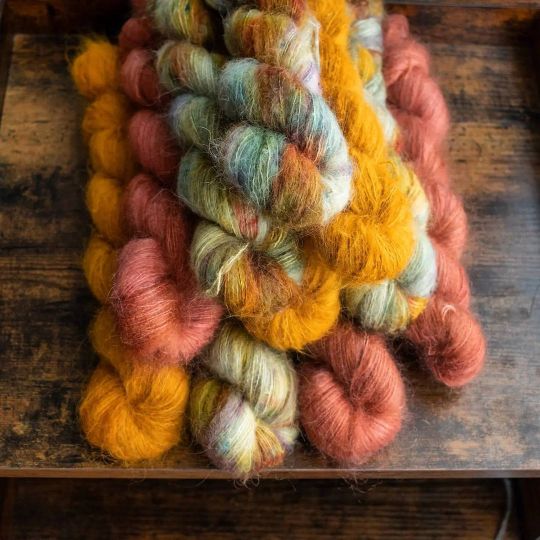
Floofy, fluffy goodness part 2 😍 Totally giving me all the Fall vibes 🧡🍂🌾🍁🎃 Come check them out in the shop. Link in bio 💛 • • • • • #handdyedyarn #indiedyer #knittersofinstagram #knitting #crochet #yarnporn #handdyed #yarn #yarnlove #alpacayarn #indiedyedyarn #handmade #alpacafiber #crochetersofinstagram #knitstagram #indiedyersofinstagram #knit #yarnaddict #knittersgonnaknit #kidmohair #mohair (at Colorado Springs, Colorado) https://www.instagram.com/p/CS19QceLppq/?utm_medium=tumblr
#handdyedyarn#indiedyer#knittersofinstagram#knitting#crochet#yarnporn#handdyed#yarn#yarnlove#alpacayarn#indiedyedyarn#handmade#alpacafiber#crochetersofinstagram#knitstagram#indiedyersofinstagram#knit#yarnaddict#knittersgonnaknit#kidmohair#mohair
1 note
·
View note
Video
How about an alpaca to mow your lawn?? #alpacafarm #alpacalove #alpacas #alpacasofinstagram #firealpaca #alpacaworld #alpacawool #alpacalover #alpacalife #alpacafiber #alpacagram #babyalpaca #alpacalovers #alpacadirect #alpacatoday #alpacaclub #alpacababy #alpacagram #alpacalypse #alpacamybags #alpacacamera #alpacaclub #alpacas #alpacasocks #alpacasso #alpacasilk #alpacaselfie #alpacasweater #alpacascarf #ipreview via @preview.app (at AlpacaDirect.com) https://www.instagram.com/p/B0t6yOlnmGW/?igshid=18is9f5nwsbo8
#alpacafarm#alpacalove#alpacas#alpacasofinstagram#firealpaca#alpacaworld#alpacawool#alpacalover#alpacalife#alpacafiber#alpacagram#babyalpaca#alpacalovers#alpacadirect#alpacatoday#alpacaclub#alpacababy#alpacalypse#alpacamybags#alpacacamera#alpacasocks#alpacasso#alpacasilk#alpacaselfie#alpacasweater#alpacascarf#ipreview
5 notes
·
View notes
Photo

Our herd’s much lighter, cooler too 😎, after shearing day! Now, what to do with all this beautiful fiber! #shearing #shearingalpacas #alpacashearingday #alpacafiber #fiberharvest #alpacameadows #destinationmansfield (at Alpaca Meadows)
#shearingalpacas#fiberharvest#destinationmansfield#alpacafiber#shearing#alpacameadows#alpacashearingday
1 note
·
View note
Video
Cute Frolicking Alpacas! . This is a #repost from @shamarra_alpacas via @alpaca.of.insta and via @PhotoAroundApp 100% you've never seen something as cute as this . . . 🎬🎬🎬@alpacasofinstagram ✅ Follow, like and comment ✏ @alpaca.of.insta 💘 Tag your love 👍👍👍 #alpacagram #alpacalypse #alpacameras #alpacaclub #alpacaselfie #alpacalove #alpacafiber #alpacababy #alpacalife #alpacaexpeditions #alpacaknit #alpacassos #alpacafe #alpacasrule #alpacashow #alpaca1 #alpacahair #alpacalunch #Cute #Kawaii
#repost#alpacameras#alpacaselfie#cute#alpacalunch#alpacassos#alpacafe#alpaca1#alpacalove#alpacalife#alpacahair#alpacafiber#alpacababy#alpacashow#alpacaexpeditions#kawaii#alpacagram#alpacaknit#alpacasrule#alpacalypse#alpacaclub
4 notes
·
View notes
Photo

Автор: @alexmitsukeru with @get_repost ・・・ I had this alpaca hair from zerga studio and i finally found inspiration to make this wig i had envisioned from long ago! I’m developing a realistic way to do the parting line on alpaca wigs! What do you think? #bjd #abjd #unoa #unoalusis #instadoll #dollstagram #dollcollector #gyarudoll #gyaru #japanesedoll #kawaii #asiandoll #dolleyes #dollhair #dollface #bjdaddict #bjdhobby #bjdwig #alpacawig #alpacafiber #wiggoals #tinywig #followforfollowback #handmakertop (at Красный Октябрь) https://www.instagram.com/p/CFwLmHXAGvW/?igshid=b01t9yftyjfi
#bjd#abjd#unoa#unoalusis#instadoll#dollstagram#dollcollector#gyarudoll#gyaru#japanesedoll#kawaii#asiandoll#dolleyes#dollhair#dollface#bjdaddict#bjdhobby#bjdwig#alpacawig#alpacafiber#wiggoals#tinywig#followforfollowback#handmakertop
1 note
·
View note
Photo
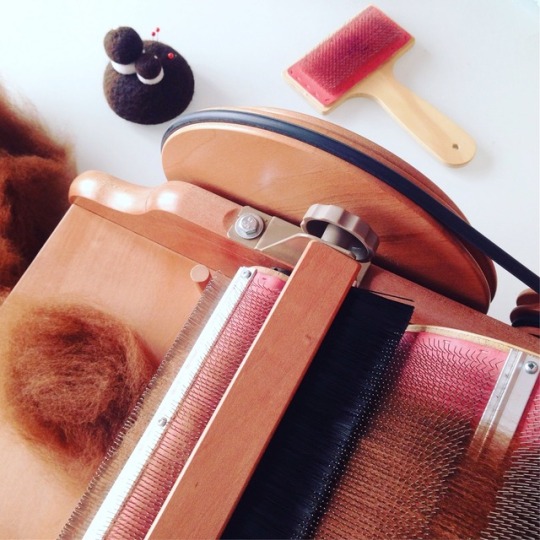
At work 2.0 💪🏻
1 note
·
View note
Link
🦙 Alpaca wool is highly prized for its softness, warmth, and durability. To obtain this precious fiber, alpacas must be shorn once a year. Proper alpaca shaving is essential to ensure the animal's welfare and the quality of the wool. In this article, we'll share some tips and techniques to make the process easier and more efficient. 🧑🌾 Alpaca shearing requires skill, patience, and the right tools. A good set of clippers, blades, and combs is a must. The alpaca must be restrained safely and comfortably, and the shearer must work with care and precision. The wool must be removed in one piece, without cutting or damaging the skin. Proper hygiene and sanitation are also crucial to prevent infections and diseases. 🌡️ Alpaca shaving is a delicate balance between the animal's health and the wool's quality. Over-shaving can cause stress, sunburn, and hypothermia, while under-shaving can lead to matting, felting, and contamination. The best time to shear alpacas is in the spring, before the hot summer months. With the right techniques and care, alpaca shaving can be a rewarding and enjoyable experience for both the animal and the farmer.1. Understanding the Importance of Alpaca ShavingAlpaca shaving is an essential process that helps maintain the health and well-being of these animals. It involves removing the fleece from the alpacas, which helps regulate their body temperature and prevents overheating. Regular shaving also ensures that the alpacas remain clean and hygienic. It helps prevent skin infections and other health issues caused by excessive dirt and moisture. Alpaca fleece is highly valued for its softness, warmth, and hypoallergenic properties. Shaving the alpacas allows farmers to collect this valuable resource, which can be used to make a variety of products, including clothing, blankets, and accessories. Alpaca fleece is also eco-friendly, as it is a renewable resource that can be harvested without harming the animals. Shaving the alpacas also helps prevent overgrazing, which can damage the environment and reduce the quality of the pasture. Proper alpaca shaving requires skill and experience, as it is important to avoid injuring the animals or damaging their fleece. It is best to hire a professional shearer who has the necessary equipment and expertise to perform the job safely and efficiently. Alpaca shearing should be done once a year, ideally in the spring or early summer. It is important to provide the alpacas with proper nutrition and care before and after shaving to ensure their health and well-being. Overall, alpaca shaving is a crucial aspect of alpaca farming that helps maintain the health and happiness of these beautiful animals, while also providing a valuable resource for the textile industry.2. Preparing Your Alpaca for the Shaving ProcessBefore shaving your alpaca, there are a few things you need to do to prepare them for the process: Ensure your alpaca is clean and free of debris to prevent matting. Trim any long or tangled hair to make the shaving process easier. Check for any skin irritations or wounds and treat them before shaving. Make sure your alpaca is calm and comfortable before beginning the process. It's important to use the right tools for shaving your alpaca: Use a sharp clipper blade to prevent pulling and discomfort. Have extra blades on hand in case one becomes dull during the process. Use a clean and lubricated blade to prevent overheating and injury. Don't forget to take breaks during the shaving process: Stop and rest your alpaca if they become agitated or uncomfortable. Offer water and food to keep your alpaca hydrated and energized. Take breaks to stretch your own muscles and prevent fatigue. After shaving your alpaca, there are a few things you should do: Apply a soothing cream or oil to prevent skin irritation. Keep your alpaca warm and dry to prevent illness. Monitor your alpaca for any signs of discomfort or injury. 🦙🪒🧼🚰🔪🛁3. Best Practices for Alpaca Shaving TechniquesProper alpaca shaving techniques are essential for their health and comfort. Here are some best practices: Use sharp blades: Dull blades can cause discomfort and uneven cuts. Start with clean animals: Dirty animals can clog clippers and cause infections. Use proper restraint: Alpacas can be skittish, use halters and lead ropes for safety. Shave in dry weather: Wet fur can cause clumping and uneven cuts. Shave in sections: Divide the alpaca into sections and shave one at a time for better control. Leave some fur: Leave at least an inch of fur for protection from sunburn and insects. Remember to take breaks and give the alpaca water during the process. Happy alpacas make for happy farmers! 🦙🪒💦4. Choosing the Right Tools for Alpaca ShavingWhen it comes to alpaca shaving, having the right tools is crucial for a successful and stress-free experience. Here are some tips to help you choose the best tools for the job: Electric Clippers: Ideal for large herds, these clippers are efficient and easy to use. Handheld Clippers: Great for small herds or touch-ups, these clippers offer precision and control. Blades: Make sure to choose blades specifically designed for alpaca hair to ensure a clean cut. Shears: Used for detailed work, shears are perfect for trimming around the face and legs. It's important to choose tools that are comfortable for you to use and fit your budget. Don't forget to also consider the size of your herd and the amount of grooming you plan to do. Investing in high-quality tools may cost more upfront, but can save you money in the long run by lasting longer and providing better results. Don't skimp on quality! Remember to always prioritize safety when using any tools around your alpacas. Keep them calm and secure during the grooming process. With the right tools and a little bit of practice, alpaca shaving can be a rewarding and enjoyable experience for both you and your furry friends! 🦙✂️5. Aftercare for Your Alpaca Post-ShavingProper aftercare is crucial for your alpaca's health after shaving. Here are some tips: Keep them warm: Alpacas are susceptible to hypothermia after shaving. Keep them in a warm, dry area. Feed them well: Provide your alpaca with high-quality hay and plenty of fresh water to help them recover. Protect their skin: Apply sunscreen to prevent sunburn and insect repellent to avoid bites. Monitor their behavior: Keep an eye on your alpaca's behavior and appetite. Any changes could indicate an issue. It's also important to keep their fleece clean and free of debris to prevent matting. Regular grooming and shearing can help maintain their health and appearance. Don't forget to give your alpaca plenty of love and attention during their recovery period. A little extra care goes a long way in keeping them healthy and happy. 🦙❤️6. Common Mistakes to Avoid When Shaving Alpacas Not using sharp blades: Dull blades can cause discomfort and uneven cuts. Always use sharp blades to ensure a smooth shave. Shaving too close: Shaving too close can cause skin irritation and even bleeding. Leave a little bit of hair to avoid this. Not cleaning the area: Alpacas are prone to infections, so it's important to clean the area before and after shaving. Not using proper tools: Using the wrong tools can lead to uneven cuts and discomfort. Use clippers and shears specifically designed for alpaca grooming. Shaving in cold weather: Shaving in cold weather can cause hypothermia and other health issues. Wait until the weather is warmer before shaving. Not having a plan: Shaving without a plan can lead to uneven cuts and missed spots. Create a plan before starting to ensure a smooth shave. 7. Expert Advice on Alpaca Shaving for Optimal ResultsAlpaca shaving is an essential part of their grooming routine. Follow these expert tips for optimal results: Use sharp, clean clippers to avoid causing discomfort to the animal. Start shaving from the neck and work your way down to the legs. Shave against the direction of hair growth for a closer cut. Be careful around sensitive areas like the face and belly. Regular shaving helps prevent overheating and matting of the alpaca's fur. It also promotes healthy growth and keeps them looking their best. Shave every 6 to 12 months, depending on the climate and the animal's coat. Leave at least an inch of hair to protect the alpaca from the sun and cold. Trim the hair around the eyes to prevent irritation and infection. Consider hiring a professional if you're new to alpaca shaving. Remember to provide your alpaca with plenty of water and shade during and after shaving. Happy grooming! 🦙💇♀️ In conclusion, alpaca shaving is a crucial task that requires proper techniques and tools. By following the tips mentioned in this article, you can ensure the safety and comfort of your alpacas during the shearing process. Remember to always prioritize their well-being and use gentle, efficient movements. Don't forget to maintain your equipment and keep a clean workspace to prevent infections and injuries. With patience and practice, you can become a skilled alpaca shearer and contribute to the sustainable and ethical production of alpaca fiber. 🐑💈🌟 https://shavingformen.com/alpaca-shaving-tips-and-techniques/?_unique_id=6484482a1d709
0 notes
Photo
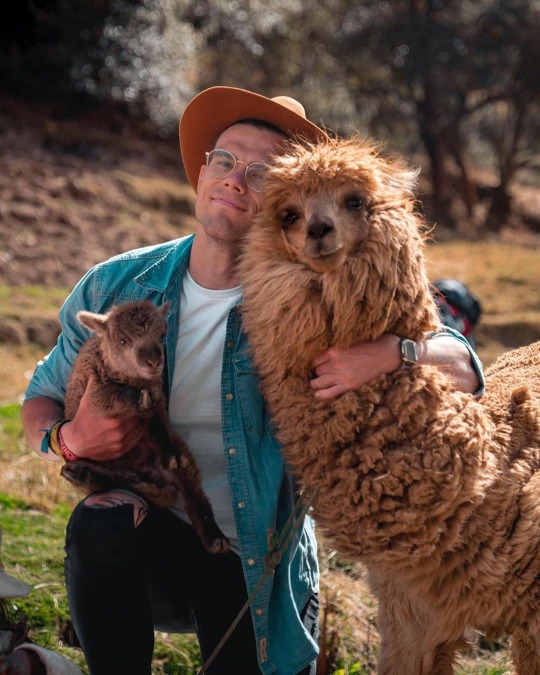
Alpaca sweaters are super soft and a great souvenir of your travels. But how about a hug 🤗 with a real one and a photo to remember it by! We know which one we'd choose.�� Lovely 📸 @dmytromoyseyev #alpaca #alpacalovers #visitperu #cusco #peru #alpacafiber #travel #travelgram #wanderlust (at Cusco, Peru) https://www.instagram.com/p/B9pCFoigwfD/?igshid=1b879rosnf2wd
0 notes
Photo
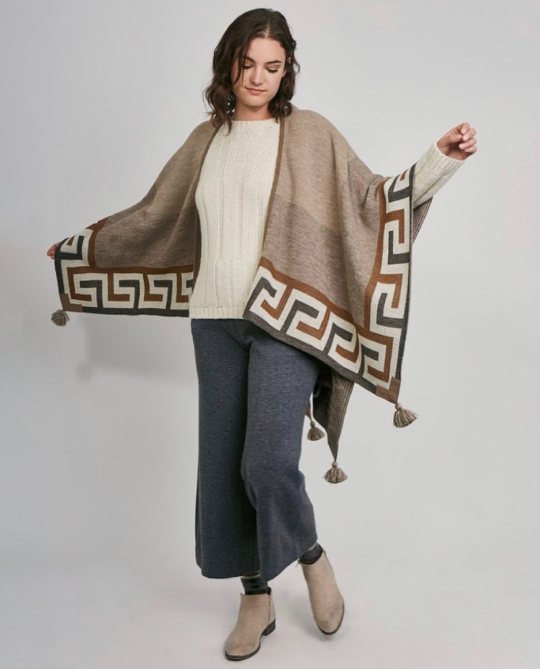
International Women’s Day is coming soon… why not surprise the woman in your life with Pacalpa’s Iris Baby Alpaca cape. The best present, for that special person!
Get it exclusively from our website, link in our bio!
#luxury #pacalpa #fashion #alpacafashion #babyalpaca #alpacafiber
0 notes
Photo

Baby alpaca toy, huacaya variety in assorted colors. . . . #alpaca #babyalpaca #alpacas #babyalpacas #alpacatoy #alpacatoys #alpacalove #alpacafarm #alpacagram #alpacasofinstagram #alpacalife #alpacawool #alpacafun #alpacafiber #alpacaclub #alpaka #alpakas #alpakafarm #cutealpaca #littlealpaca #alpacalover #alpacahill #alpacababy #alpacadotgram #alpacaexpeditions #alpacaisalifestyle #alpacaknit #alpacalypse #alpacalovers #alpacamybags https://www.instagram.com/p/COO9wYZhOMq/?igshid=ntmpyh2iwcy5
#alpaca#babyalpaca#alpacas#babyalpacas#alpacatoy#alpacatoys#alpacalove#alpacafarm#alpacagram#alpacasofinstagram#alpacalife#alpacawool#alpacafun#alpacafiber#alpacaclub#alpaka#alpakas#alpakafarm#cutealpaca#littlealpaca#alpacalover#alpacahill#alpacababy#alpacadotgram#alpacaexpeditions#alpacaisalifestyle#alpacaknit#alpacalypse#alpacalovers#alpacamybags
0 notes
Photo
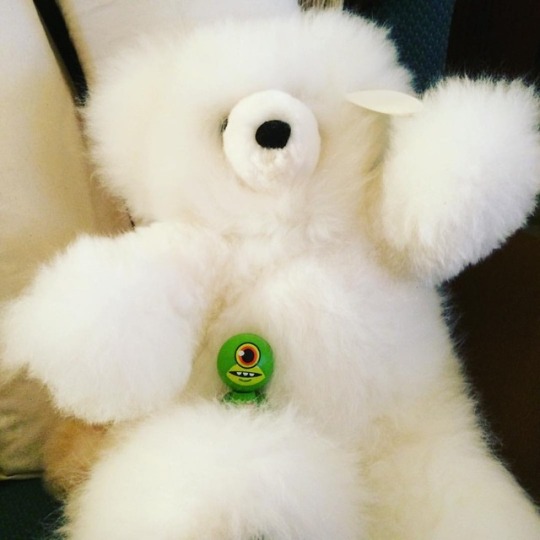
This teddy bear is made out of alpaca fibre! Im I’ve determined that it is one of the softest things in the universe! #teddybear #bear #alpaca #madefromalpaca #alpacafiber #cozy #cozybear
2 notes
·
View notes
Photo
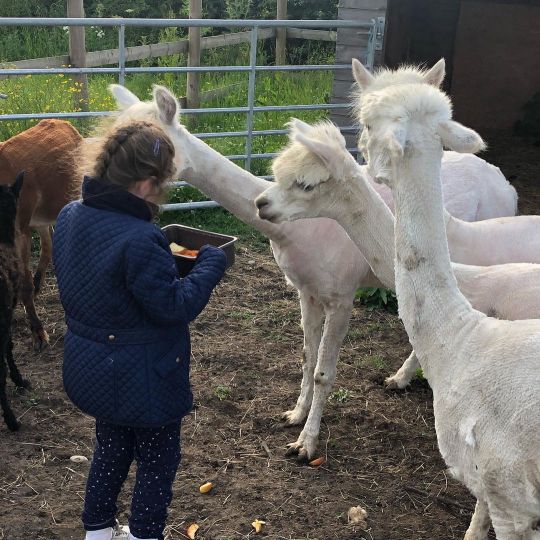
Breakfast is served ladies! Have a look at our website - we got some great school holiday offers - - - - - - @clarymeadowsalpacas #clarymeadowsalpacas www.clarymeadowsalpacas.co.uk - - - - - - - #alpaca #alpacas #alpacaofinstagram #alpacaweddings #alpacawalking #alpacalove #alpacafarm #alpacaworld #derbyshire #alpacalife #alpacabirthdayparty #alpacawool #alpacababy #alpacafiber #alpacatrekking #alpacaselfie #alpacawool #farmlife #farm #babyalpaca #alpacalover #alpacafun #alpaka #alpakas #schoolholidays #animals #nature #savethebees #savetheplanet #alpacaofinstagram #alpacagram (at Derbyshire) https://www.instagram.com/p/CRszv63p07L/?utm_medium=tumblr
#clarymeadowsalpacas#alpaca#alpacas#alpacaofinstagram#alpacaweddings#alpacawalking#alpacalove#alpacafarm#alpacaworld#derbyshire#alpacalife#alpacabirthdayparty#alpacawool#alpacababy#alpacafiber#alpacatrekking#alpacaselfie#farmlife#farm#babyalpaca#alpacalover#alpacafun#alpaka#alpakas#schoolholidays#animals#nature#savethebees#savetheplanet#alpacagram
0 notes
Photo
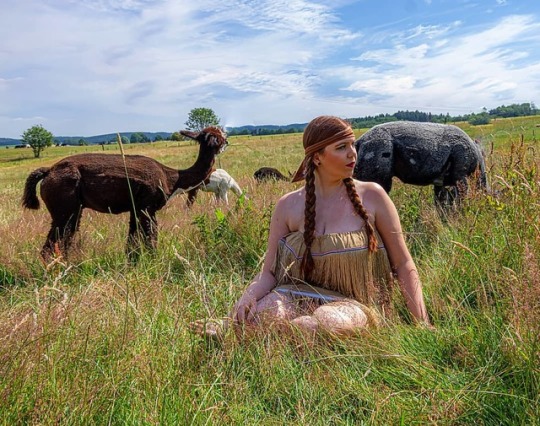
"Nscho-tschi, das bedeutet »Schöner Tag«" Filmzitat aus Winnetou l - mit @sarah_chaotenmenschin als Model #alpakafarminti #AlpakaShooting #alpaka #alpaca #alpakaLiebe #alpacafiber #alpakasofinstagram #alpakalove#alpakalover #alpacaWorld #alpacafarm #alpacagram #photograeff #potrait_perfection #portraitfestival #portraitphotography #moodyports #theartconvict #theportraitpr0ject #portrait_vision #pursuitofportraits #portrait_shots #photoart #portraits_life #moodyportraits #dynamicportraits #portraitstream #portraitsausderwelt #foto_follower_loop #shootingwithanimals (hier: Alpaka Farm Inti) https://www.instagram.com/p/B2SEox5oT70/?igshid=1rr3f1fz6l2q1
#alpakafarminti#alpakashooting#alpaka#alpaca#alpakaliebe#alpacafiber#alpakasofinstagram#alpakalove#alpakalover#alpacaworld#alpacafarm#alpacagram#photograeff#potrait_perfection#portraitfestival#portraitphotography#moodyports#theartconvict#theportraitpr0ject#portrait_vision#pursuitofportraits#portrait_shots#photoart#portraits_life#moodyportraits#dynamicportraits#portraitstream#portraitsausderwelt#foto_follower_loop#shootingwithanimals
0 notes
Photo

Look at these handsome boys! Vicki from @alpacapines generously showed us around the mill today and I wanted to stay forever:) Did the next best thing: had some #alpacafiber carded up to bring home. #handspinningfiber #fiberarts #knitstagram #knittersofinstagram #fibermill #localfiber #huacayaalpaca #surialpaca (at Alpaca Pines LLc Farm and Fiber Mill)
#alpacafiber#handspinningfiber#knittersofinstagram#knitstagram#fibermill#localfiber#huacayaalpaca#surialpaca#fiberarts
14 notes
·
View notes